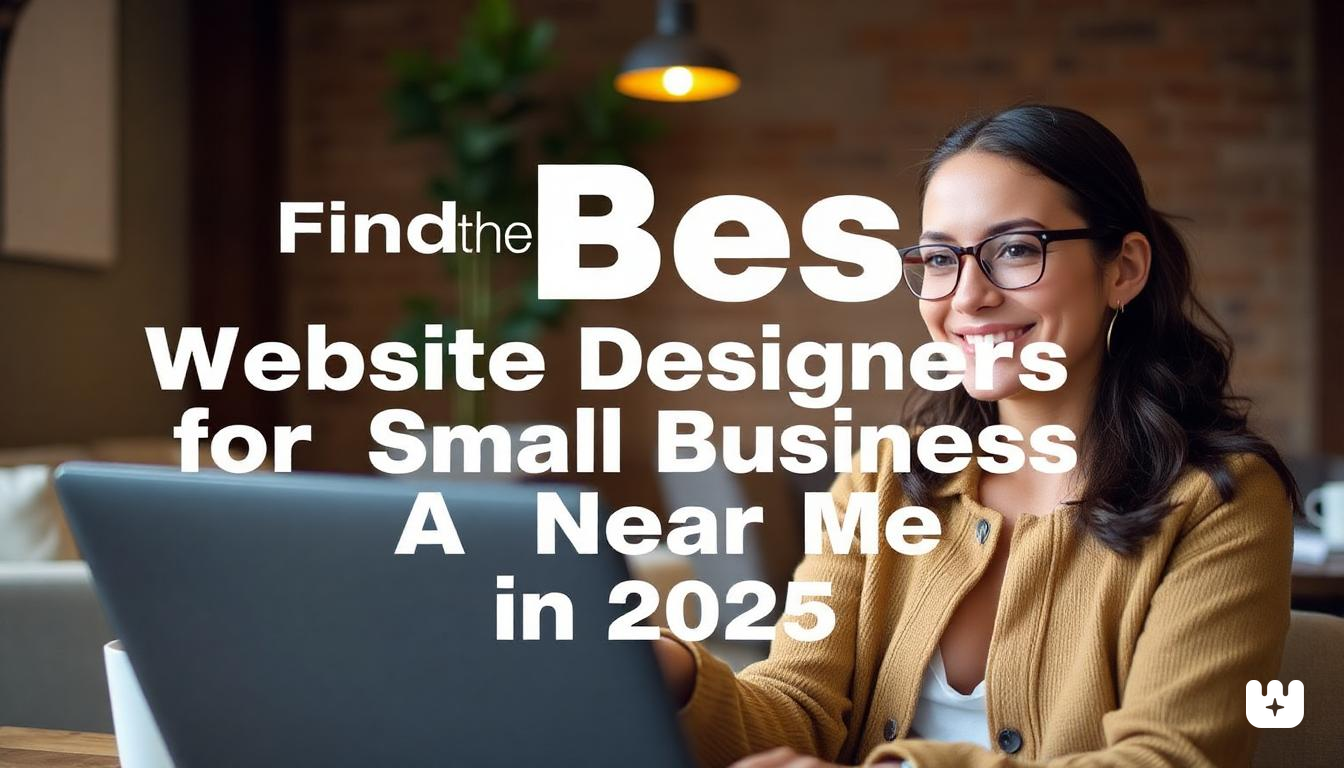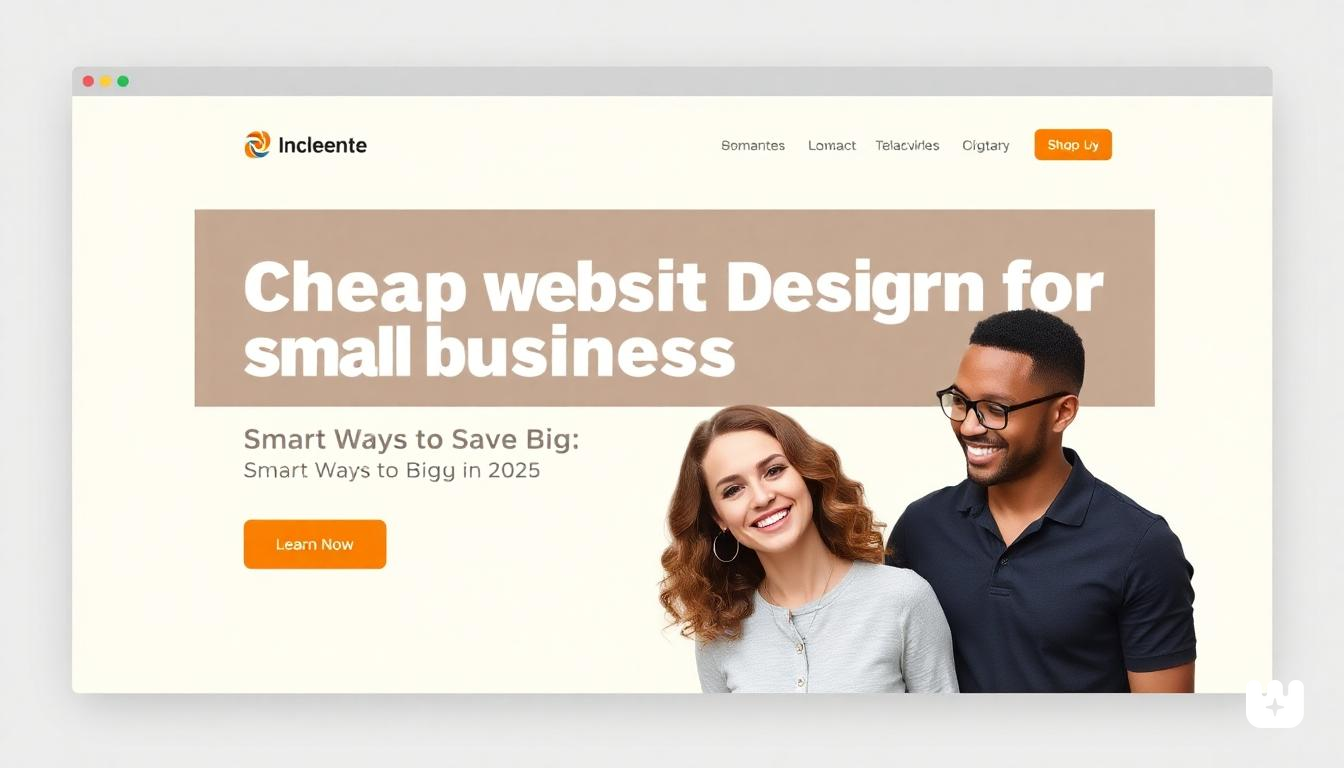In today's digital marketplace, effective web design for small businesses has evolved from a nice-to-have to an absolute necessity.
As we navigate 2025, small businesses face unprecedented digital competition, increasingly stringent mobile-first standards, and dramatically evolved user expectations. A professionally designed website no longer merely represents your brand online—it actively drives growth, builds credibility, and converts visitors into loyal customers.
Small businesses that invest strategically in their web presence now are positioning themselves for sustainable success in an increasingly crowded digital landscape.
Why Web Design Is Crucial for Small Business Growth
First Impressions Happen in Milliseconds
Research from Stanford Web Credibility Research shows that 75% of users judge a company's credibility based solely on its website design. In fact, it takes just 50 milliseconds (0.05 seconds) for users to form an opinion about your website. For small businesses competing against established brands, that split-second judgment can mean the difference between gaining a new customer or losing them to a competitor.
SEO Advantages That Drive Traffic
Modern web design integrates seamlessly with search engine optimization strategies. Well-structured, responsive websites with clean code receive preferential treatment from Google's algorithms. According to Moz, user experience signals like bounce rate, page load time, and mobile responsiveness directly influence your search rankings. For small businesses, this means a well-designed website can dramatically improve visibility without massive marketing budgets.
Conversion Rates That Impact Revenue
Perhaps most importantly, professional web design directly impacts conversion rates. A study by Forrester Research found that improved UX design could yield conversion rates up to 400% higher. For small businesses operating with tight margins, this conversion efficiency can transform profitability without requiring additional traffic.
Trust-Building in a Skeptical Market
In an era of increasing online scams and privacy concerns, website design serves as a trust signal. Nearly 90% of consumers report they would stop engaging with a website that looks outdated or untrustworthy. Small businesses must establish digital credibility quickly, and professional web design is the foundation of that trust.
10 Effective Web Design Strategies for 2025
1. Mobile Optimization
Mobile optimization has progressed far beyond basic responsiveness in 2025. Today's standards demand:
- Thumb-friendly navigation with interactive elements placed in easily accessible screen zones
- Content prioritization that presents the most crucial information first on smaller screens
- Progressive loading that delivers critical content before decorative elements
- Touch-gesture integration that feels natural and intuitive
With mobile traffic consistently exceeding desktop users, small businesses must prioritize mobile experiences or risk losing over half their potential customers. According to HubSpot, 61% of users are unlikely to return to a site they had trouble accessing on mobile, and 40% will visit a competitor instead.
2. Minimalist & Clean Layouts
The trend toward minimalism in web design continues to strengthen in 2025, especially for small businesses needing to make clear impressions quickly:
- Strategic white space that guides attention to key elements
- Purpose-driven design elements with each component serving a specific function
- Reduced cognitive load through simplified navigation and content presentation
- Emphasis on typography as both functional and aesthetic elements
Minimalist designs load faster, communicate more effectively, and create memorable brand experiences—all critical advantages for small businesses competing for attention.
3. Strong Branding Elements
Consistent branding across your website builds recognition and trust:
- Cohesive color schemes that align with emotional branding goals
- Unique typography choices that differentiate your brand voice
- Custom icons and illustrations that reinforce brand personality
- Consistent visual language across all pages and touchpoints
Small businesses with distinctive, consistent branding outperform generic competitors by creating stronger emotional connections with visitors.
4. Easy Navigation
Navigation systems have evolved significantly in 2025:
- Context-aware menus that adapt based on user behavior and history
- Simplified primary navigation with logical hierarchies
- Interactive wayfinding elements that guide users through complex processes
- Search functionality with predictive suggestions and natural language processing
For small businesses, intuitive navigation reduces friction points that might otherwise lead to abandoned visits. Studies show that users who find navigation confusing will leave within 3 seconds.
5. Fast Load Speed
Page speed continues to be a critical factor for both user experience and search ranking:
- Server response optimization through advanced caching
- Next-generation image formats and compression
- Resource prioritization that loads above-the-fold content first
- Lightweight frameworks that minimize code bloat
According to Google, as page load time increases from 1 to 3 seconds, the probability of bounce increases by 32%. Small businesses simply cannot afford this loss of potential customers.
6. Conversion-Focused CTAs
Strategic calls-to-action drive business results:
- Contrast-rich design elements that naturally draw attention
- Personalized CTA language based on user behavior and context
- Strategic placement at key decision points in the user journey
- A/B tested variations that continuously improve performance
For small businesses, well-designed CTAs can significantly increase conversion rates without requiring additional traffic—maximizing the value of every visitor.
7. Integrated Social Proof
Trust signals have become increasingly sophisticated:
- Dynamic testimonial displays that show relevant reviews based on viewed content
- Integration of verified purchase badges and trust certifications
- Real-time social media engagement metrics
- Case studies and success stories formatted for quick consumption
With 92% of consumers reading online reviews before making purchase decisions, small businesses must strategically integrate credibility markers throughout their websites.
8. SEO-Structured Pages
Modern SEO-friendly design goes beyond keywords:
- Schema markup for enhanced search result displays
- Content structured around semantic search principles
- Internal linking architectures that distribute page authority
- Core Web Vitals optimization for improved search rankings
For small businesses, these technical SEO elements built into website design create sustainable organic traffic advantages.
9. Engaging Visual Content
Visual storytelling has evolved dramatically:
- Microinteractions that create delightful moments throughout the user experience
- Short-form video content optimized for various contexts
- Interactive data visualizations that simplify complex information
- Authentic imagery that reflects genuine brand character
Small businesses that effectively leverage visual content see 94% higher view rates and 40% better response to calls-to-action, according to Wyzowl.
10. Accessibility Compliance
Web accessibility is both ethically important and legally prudent:
- WCAG 2.2 compliance across all site elements
- Color contrast ratios that accommodate visual impairments
- Alternative text implementations for non-text content
- Keyboard navigation support for users with motor limitations
For small businesses, accessibility compliance expands your potential audience while minimizing legal risks associated with discrimination claims.
Web Design Tools and Platforms for Small Businesses
The toolbox available to small businesses has expanded significantly in 2025:
DIY Website Builders
- Wix: Offers AI-powered design assistance with increasingly sophisticated templates
- WordPress: Remains powerful with block editors that have simplified the learning curve
- Shopify: Continues to dominate e-commerce with specialized small business features
- Squarespace: Maintains its position as the design-forward option with professional aesthetics
Professional Design Services
- Freelance designers: Provide customized solutions with varied price points
- Design agencies: Offer comprehensive strategy and implementation
- Tube-Ads.store: Specializes in small business web design with SEO-optimization
Emerging Technology Platforms
- No-code development platforms: Allow complex functionality without technical expertise
- AI design assistants: Generate custom elements based on brand guidelines
- Conversion optimization tools: Provide data-driven insights for continuous improvement
How Tube-Ads.store Supports Small Business Growth
Tube-Ads.store has positioned itself as a specialized solution for small businesses needing professional web design without enterprise-level budgets. Their approach combines templated efficiency with customized branding—creating websites that perform technically while maintaining unique brand identity.
Their small business packages include:
- Mobile-first design implementation
- Performance optimization for Core Web Vitals
- Local SEO setup and integration
- Conversion path development focused on business objectives
If you're looking to save money while still getting premium design, check out our Affordable Web Design for Small Businesses Guide.
Making Strategic Design Decisions
Balancing Budget and Quality
Small businesses must make strategic choices about where to invest limited resources:
- Prioritize high-impact pages like your homepage and key landing pages
- Invest in professional photography for team and product images
- Consider phased implementation of advanced features
- Focus on conversion elements that directly impact revenue
Need help choosing a web builder? Our Top 10 Website Builders for Small Businesses in 2025 covers the best options.
Measuring Design Effectiveness
The most successful small business websites implement measurement systems:
- Heat mapping to understand user attention patterns
- Session recordings to identify friction points
- Conversion funnel analysis to optimize pathways
- A/B testing frameworks for continuous improvement
These analytics approaches allow small businesses to make data-driven decisions rather than subjective design choices.
Conclusion
Web design for small businesses in 2025 requires strategic thinking that balances aesthetic considerations with technical performance and business objectives. The digital landscape continues to grow more competitive, with user expectations constantly rising. However, small businesses that implement these ten strategic design approaches position themselves for sustainable online success.
Rather than viewing your website as a static digital brochure, consider it your most hardworking employee—one that represents your brand 24/7, communicates your value proposition clearly, and converts prospects into customers efficiently. By investing in scalable, high-quality design solutions now, you're not just creating a website—you're building a growth engine for your business's future.
The most successful small businesses recognize that effective web design isn't a one-time project but an ongoing strategic advantage that evolves alongside their business goals and customer needs. Start implementing these strategies today, and watch your small business stand out in an increasingly crowded digital marketplace.


